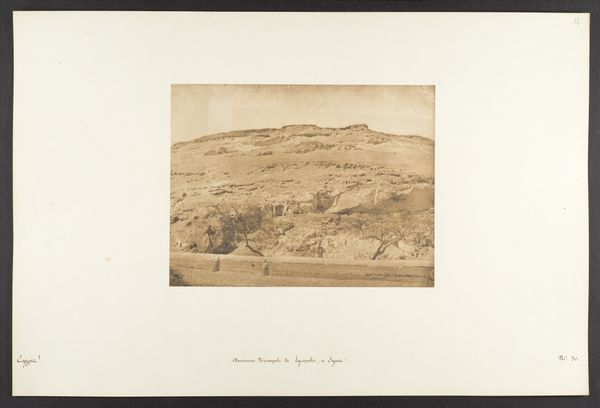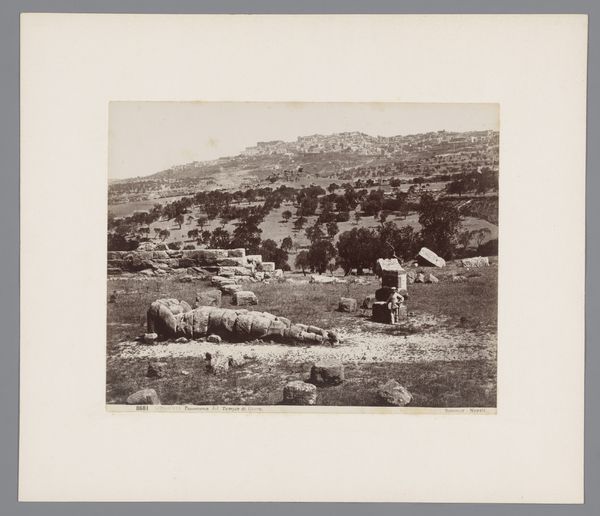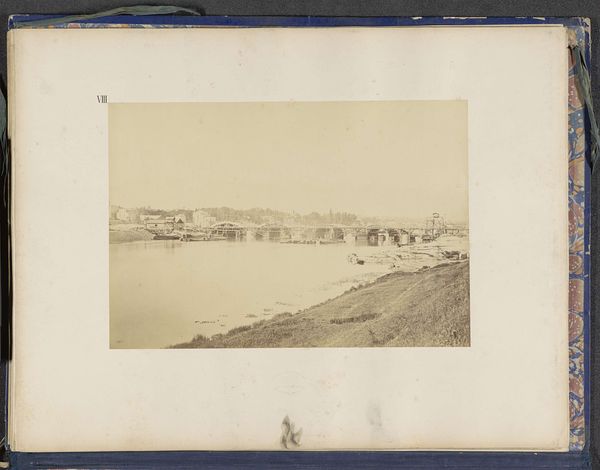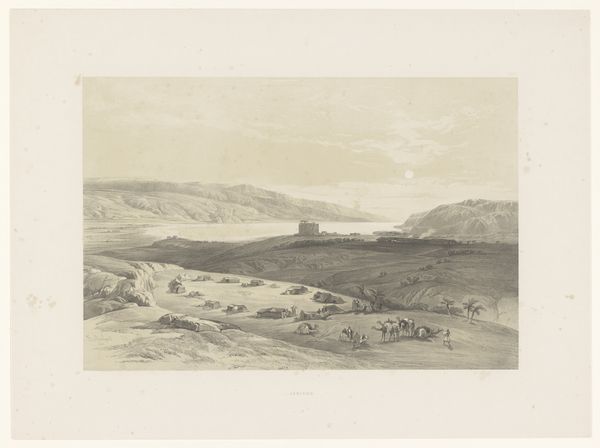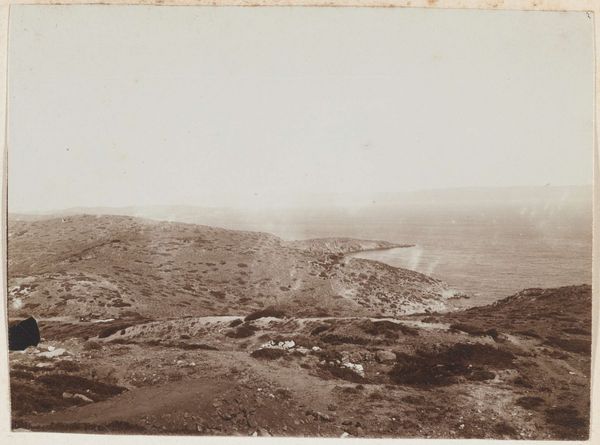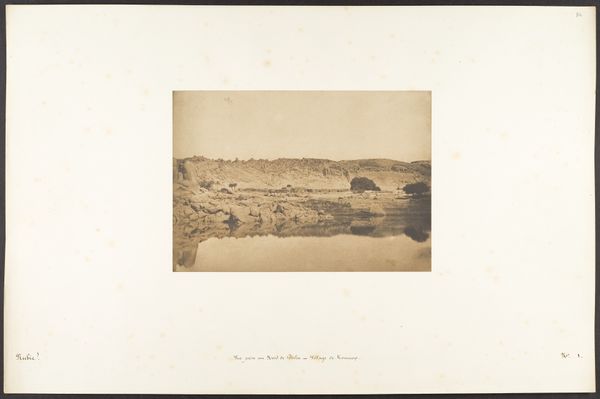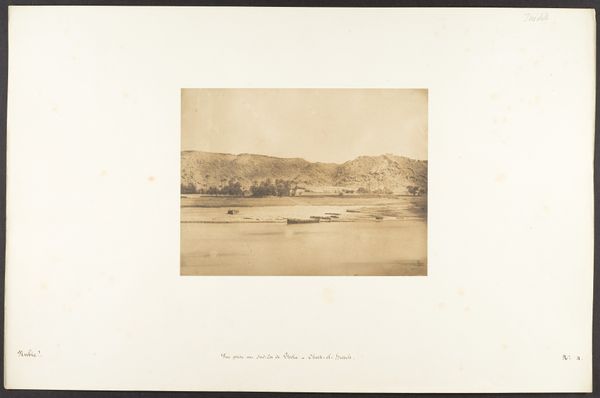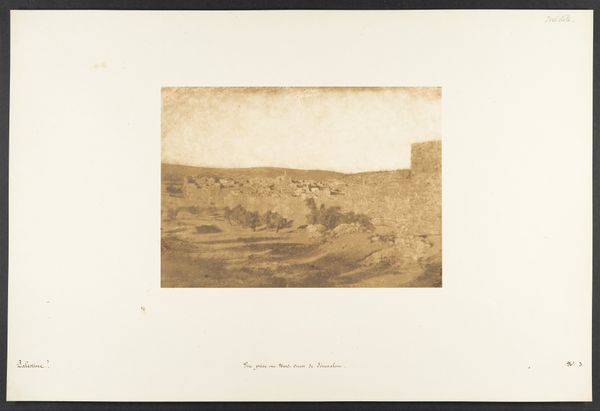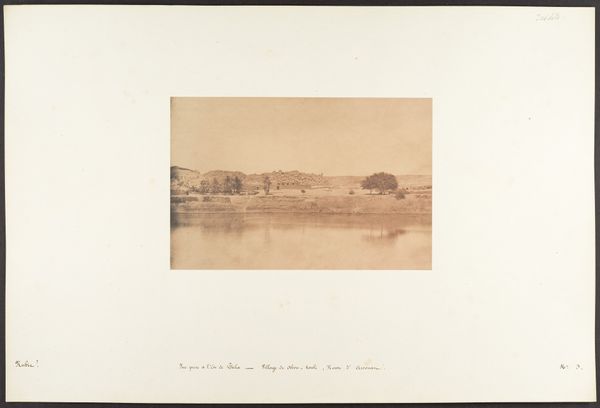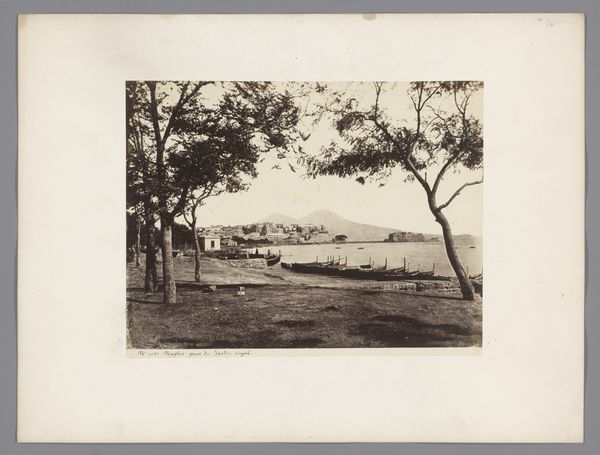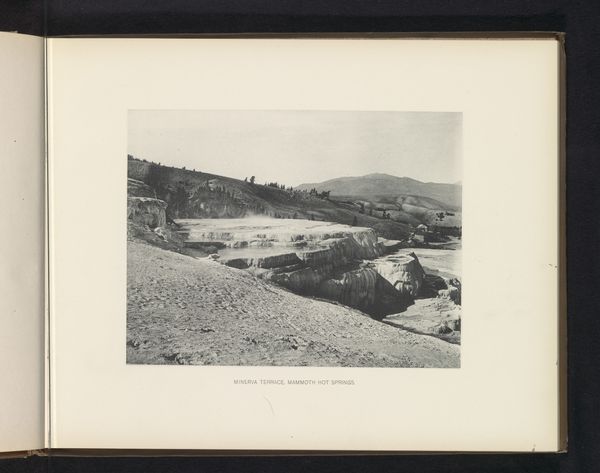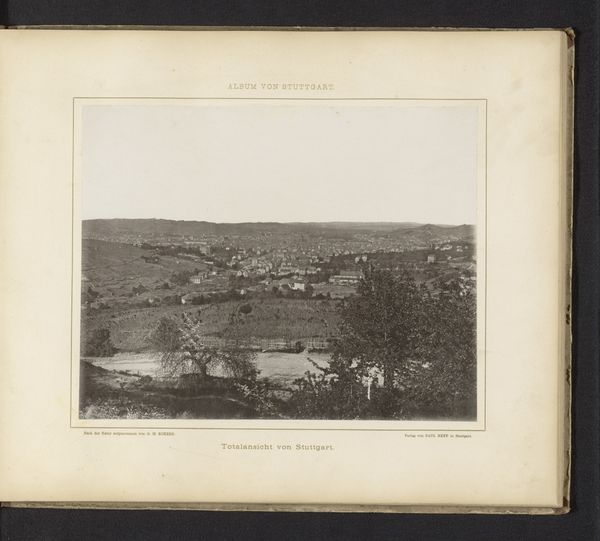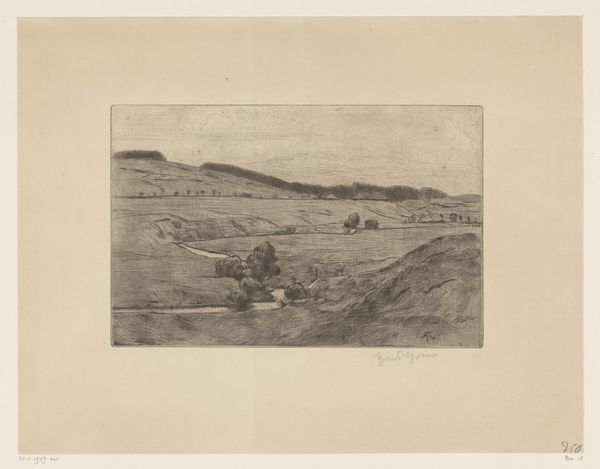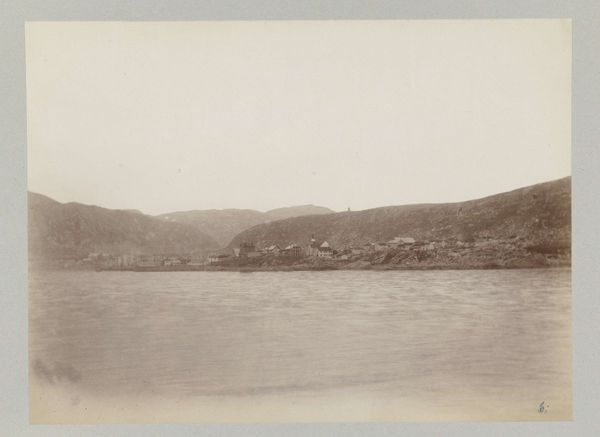
Dimensions: height 159 mm, width 218 mm, height 279 mm, width 361 mm
Copyright: Rijks Museum: Open Domain
Curator: Let’s take a closer look at “Strand bij Nice,” or "Beach at Nice," a gelatin-silver print made around 1862 by Louis Crette, found here at the Rijksmuseum. What strikes you initially about the photograph? Editor: The composition feels incredibly still, almost hauntingly so. The tones are muted, and the details, though present, seem softened, creating this immense sense of silence and isolation despite the depiction of a coastal town. Curator: Indeed. Crette’s technical approach is quite striking, especially considering the era. Notice how the photographic process captures the contrast of textures - the granular quality of the sand versus the smoother rendering of the water. Also the delicate balance created by placing the horizon line off-center. The tonality is somewhat subdued and unified. Editor: And I can't help but consider the socio-political backdrop. France in the 1860s was a period of enormous social transformation, urbanization, and burgeoning tourism along the French Riviera for the bourgeois. This image, in its starkness, it suggests the relationship between landscape and social change, who had access and ownership. I feel almost melancholic at seeing a nearly unpeopled space meant for leisure. Curator: Precisely! And by choosing to capture the everyday scene of the beach rather than monumental architecture or a staged event, Crette invites the viewer to observe the subtler aspects of modern life. Look, for instance, how the photograph emphasizes the play of light across the sand and sea, an element inherent in both realist and romantic traditions. Editor: The formal aspects really draw our attention back to how photography can become a tool of looking at power and leisure. Was this tranquility the reality for everyone, or only a carefully curated slice? What stories of the workers building those hotels are missing from view? I wonder how someone looking at this today might interpret the quiet, nearly vacant beach differently? Curator: Questions well worth asking, it all speaks to the work's lasting interest. We could continue with these considerations. But I think we need to wrap up, there is so much detail that bears contemplating Editor: Agreed. A lot to meditate on regarding who defines “landscape." Curator: Yes indeed. It really is a beguiling meditation on stillness, light, and early photographic vision.
Comments
No comments
Be the first to comment and join the conversation on the ultimate creative platform.
